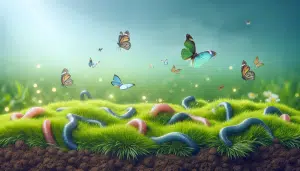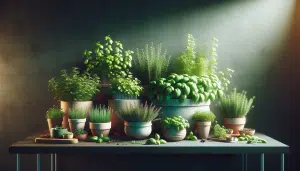Discover Efficient Ways You Can Save Water at Home
Lily Carter October 27, 2025
Explore practical steps for water conservation in your home and garden. This guide reveals efficient methods to reduce usage, lower bills, and create a sustainable living space, all while integrating key water-saving techniques to help you make a difference.
Why Water Conservation Matters for Homes
Water is a precious resource that many households use daily without realizing the true cost of overconsumption. Every drop saved leads to not only lower utility bills but also a positive impact on the environment. When residents adopt water-saving technologies and mindful habits, their actions collectively help preserve water supplies for communities and future generations. In some regions, drought conditions make conservation even more crucial, driving efforts for smarter home and garden choices that protect local ecosystems while supporting financial savings (Source: https://www.epa.gov/watersense).
Understanding the significance of water conservation involves recognizing patterns of home water usage. Common daily activities, from showering to gardening, contribute to high annual consumption. Using programmable irrigation systems, low-flow showerheads, and more conscious cleaning practices helps limit unnecessary waste. Educating family members and visitors about the simple changes that maximize efficiency forms the foundation for a more water-wise household. These ideas do not require drastic lifestyle changes, simply a willingness to adjust routines for greater benefit.
Communities that prioritize water conservation create a ripple effect. When one person becomes more strategic in their usage, others often follow. Local governments, too, are encouraging water conservation through accessible programs and rebates for installing efficient fixtures and appliances. Staying informed about local incentives and understanding where household water comes from supports a conscious and connected approach to everyday living. Consider how much water your home uses and where you can tighten your approach—every action can make an impact.
Simple Changes to Reduce Water Use Indoors
Efficient appliances instantly reduce water consumption in the kitchen and laundry room. Swapping out traditional dishwashers and washing machines for ENERGY STAR-certified options lowers water and energy requirements without sacrificing performance. Even small habits, like scraping dishes instead of pre-rinsing and waiting for full loads before running washing cycles, can make a noticeable difference over time. These steps, paired with faucet aerators, keep water waste in check and create lasting savings (Source: https://www.energystar.gov).
In bathrooms, water conservation starts with low-flow toilets and showerheads. Modern toilets use less than half the water of older models, and installing a dual-flush or low-flow version can immediately cut usage. Turning off the tap while brushing teeth, timing showers, and checking for leaks in pipes or under sinks remain strong water-saving strategies. Even fixing minor drips can save hundreds of gallons each year, often without residents even noticing much change to their daily habits.
Encouraging mindful water use among adults and children supports ongoing conservation. Placing reminders in high-use areas, such as “Turn off the water when not in use,” can have an outsized impact, especially in multifamily homes or apartment buildings. Behavioral changes add up: encouraging shorter showers or using a bucket to capture water while waiting for it to warm up can supply plants or even be used for cleaning. These practices create teachable moments and make water conservation part of household culture.
Outdoor Strategies for Smarter Watering in Gardens
Gardens offer great potential for water conservation, especially when smart irrigation and plant selection are prioritized. Drip irrigation systems deliver water slowly and directly to the plant roots, reducing evaporation and runoff. Setting irrigation times for early morning or late evening, when temperatures are cooler, ensures maximum absorption and less waste. Some homeowners install rain barrels, capturing and reusing rainwater for their outdoor plants (Source: https://www.nrcs.usda.gov).
Selecting native or drought-resistant plants plays a large role in outdoor water savings. These varieties adapt to local climates, require less supplemental watering, and provide important habitat for pollinators. Mulching around plants further helps retain soil moisture and prevents weed growth, reducing maintenance. Gardeners interested in sustainability may also consider xeriscaping, a landscaping approach that emphasizes minimal water use through thoughtful plant choices and efficient design.
Maintaining an efficient garden is about more than system upgrades—it’s also a matter of timing and attention. Checking for broken sprinkler heads, adjusting hoses to avoid runoff, and grouping plants by similar water needs all support effective watering. Soil improvement with organic matter retains more moisture, meaning less frequent watering is required. By watching weather patterns and only watering when necessary, gardeners become more attuned to their environment while reducing their impact.
Technologies and Tools That Help Save Water
Many homeowners are leveraging technology to track and manage water use with remarkable results. Water sensors, smart irrigation controllers, and leak detection systems offer real-time insights, alerting users to leaks and inefficiencies. By connecting these devices to smartphones, it’s possible to monitor usage remotely and receive recommendations for improvement (Source: https://www.energy.gov). These innovations turn water conservation into a proactive, even automated, process for busy households.
Beyond digital tools, there are simple products available to enhance home conservation efforts. Faucet aerators, low-flow fixtures, and insulated hot water pipes are budget-friendly solutions that reduce daily waste without impact on comfort. Gardeners benefit from moisture meters and weather-based timers, which prevent overwatering and help decide the best time to irrigate. Combining these devices with regular maintenance—such as checking seals and replacing worn parts—keeps systems working efficiently and prevents hidden water loss over time.
Not all technology needs to be new to be helpful. Repurposing household items, like collecting greywater from sinks and showers for nonpotable uses, is growing in popularity. While regulations vary by region, these approaches capitalize on water that’s already been used for tasks like washing hands. Homeowners can seek guidance from local utilities or water boards for approved recycling methods. Harnessing every available drop—both with advanced devices and creative repurposing—supports water resilience at the individual level.
Building Lasting Habits and Engaging the Community
Forming new, water-conscious routines at home takes time, but strong habits bring long-term results. Placing reminders in common spaces, setting family conservation challenges, or tracking monthly utility bills can turn savings into a shared goal. Celebrating progress and discussing strategies keeps conservation top-of-mind. Over months or years, these behaviors become second nature, making sustainable water use an everyday reality rather than just an occasional project (Source: https://www.nationalgeographic.org).
Connecting with neighbors and the community furthers water conservation efforts. Sharing successes or tips on social platforms and joining local sustainability initiatives brings people together for a common cause. Many cities hold workshops or distribute educational materials, empowering residents to take further steps toward efficiency. Participating in such programs can reveal new resources, such as rebates or free water-saving devices, which make the transition smoother and more affordable for everyone.
Involving children in water conservation fosters lifelong stewardship. Kid-friendly tasks include helping in the garden, learning about the water cycle, or participating in home audits to spot leaks. Hands-on experience deepens understanding and ensures that efficient water use continues from one generation to the next. By opening up conversations around conservation at home and in school, families strengthen both awareness and action—preparing a more water-secure future for all.
Practical Considerations and Long-Term Benefits
Those who save water enjoy measurable financial benefits alongside environmental ones. Lower water bills and reduced energy usage result from even basic conservation actions. Over time, upgrading to more efficient appliances and fixtures pays for itself through savings. Some insurance companies even offer discounts for homes with leak detection or water-saving upgrades in place, further adding to the financial advantages of being proactive (Source: https://www.hud.gov).
Environmental impacts are considerable. Every gallon conserved eases stress on local water systems, preserves groundwater supplies, and reduces energy needed for treatment and delivery. Water-smart landscaping fosters biodiversity by supporting pollinator species and limiting runoff pollution. Taking the time to understand personal water habits and make data-driven changes helps households lower their carbon footprint and provide a model for other families wishing to do the same.
Ultimately, building a water-wise home is about more than savings or system upgrades. It’s a conscious decision that ripples out into the broader community, safeguarding natural resources and ensuring equitable access for all. As technology improves and resources become more accessible, it’s easier than ever to create lasting change. Over time, small adjustments shape not only the home but the world outside the door, proving that every drop reserved is a step toward a resilient future.
References
1. U.S. Environmental Protection Agency. (n.d.). WaterSense. Retrieved from https://www.epa.gov/watersense
2. ENERGY STAR®. (n.d.). Products. Retrieved from https://www.energystar.gov/products
3. Natural Resources Conservation Service, USDA. (n.d.). Saving Water Outdoors. Retrieved from https://www.nrcs.usda.gov/conservation-basics/natural-resource-concerns/water-conservation/saving-water-outdoors
4. U.S. Department of Energy. (n.d.). Water Efficiency. Retrieved from https://www.energy.gov/energysaver/save-electricity-and-fuel/water-efficiency
5. National Geographic Society. (n.d.). Water Conservation Tips. Retrieved from https://www.nationalgeographic.org/topics/resource-library-water-conservation
6. U.S. Department of Housing and Urban Development. (n.d.). Water Conservation. Retrieved from https://www.hud.gov/program_offices/public_indian_housing/programs/ph/phecc/water







